
A perfectly glazed ham makes a stunning centerpiece at any dinner table, the sweet and sticky glaze contrasting deliciously with the salty and smoky meat. To keep that meat moist, cooking the ham in a baking bag is one approach. But how does the steamy bag affect the glaze? These are the secrets you need to know to bake a ham in a bag that results in both moist, rich meat and a flavorful, caramelized crust.
Bag Basics
Baking a ham in a bag creates a hot and humid environment that not only cooks the ham more quickly, but prevents the steam from escaping. This steamy environment keeps the ham from drying out and ensures that the resulting roast is moist and juicy. The circulating steam also serves to baste the ham, which is why many cooks add a flavorful liquid to the bag. Be sure to read the directions for your roasting bag; some recommend adding flour to prevent the bag from bursting. Because the bag practically guarantees success, many hams are sold with the roasting bag. Or purchase roasting bags separately from any well-stocked grocery store.
Baking Bags and Caramelization
While that hot and humid environment is good for the meat, it’s not an ideal climate for a rich, sticky glaze. That’s because a good glaze needs high, dry heat to caramelize the sugars in the glaze. This caramelization is what produces a beautifully browned, rich-looking ham. But the steamy, wet environment in the bag prevents this caramelization, and instead causes the glaze to drip off the ham, pooling at the bottom of the pan and sometimes even burning.
Best of Both Worlds
How do you get a moist ham baked in a bag, and at the same time a rich and sticky glaze? The secret is to bake the ham as you normally would, without the glaze and in the bag, for almost the entire cooking time. About 15 to 20 minutes before the ham is ready, remove it from the oven and raise the temperature to 400 degrees Fahrenheit. While the temperature rises, cut open the bag and brush on your favorite glaze. Place the ham back into the oven and cook for the last 15 to 20 minutes, or until the glaze is rich and brown. The short cooking time at the high heat will keep your ham from drying out, yet give you just enough time to produce a glistening, rich glaze.
Above and Beyond
Add liquids to the bag during cooking to give the ham flavor. Water, apple cider and even the classic southern favorite Coca-Cola are tasty additions. Enhance the flavor even more with hearty herbs, such as rosemary or juniper berries. Make your own tasty glaze with apricot or apple jelly, cinnamon, mustard, maple syrup or brown sugar, butter and salt. The glaze should be the consistency of a paste before you put it on the ham to ensure that it doesn’t run off the roast.
Related Articles
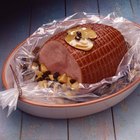
Should I Glaze Ham if I'm Baking in a ...

How to Use Reynolds Oven Bags

How to Cook a Roast in a Bag
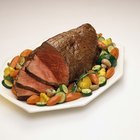
How to Cook a Sirloin Tip Roast in a ...

How Do I Roast a Picnic Ham?
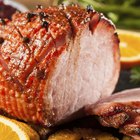
How to Cook Ham in a Roaster

How do I Care for Eel Skin Handbags?
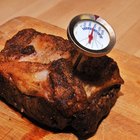
How to Cook Bottom Round Roast in a ...

How to Protect Leather Bags
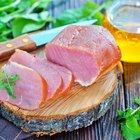
How to Reheat a Ham
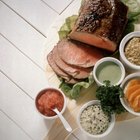
How to Cook a Roast in a Browning Bag ...

Cooking a Pig Leg
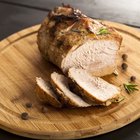
How to Cook a Tavern Ham

How to Cook a Ham With Brown Sugar & ...
How to Cook a Brisket in a Bag
How to Cook Chuck Roast in a Baking Bag

How to Make Glaze From Granulated Sugar
How to Cook a Picnic Shoulder in the ...
How to Cook a Ham With Brown Sugar, ...
How to Cook Prime Rib Roast in a ...
References
Writer Bio
A graduate student in Boston, MA, Michael Kay has been a professional writer for over five years. After working in political communications, he began working as a copywriter for a national advertising agency based in Chicago. His work can be found in college textbooks, corporate marketing materials and across the Web. He has a Bachelor of Arts in magazine feature writing from Ball State University.
Photo Credits
Eising/Photodisc/Getty Images